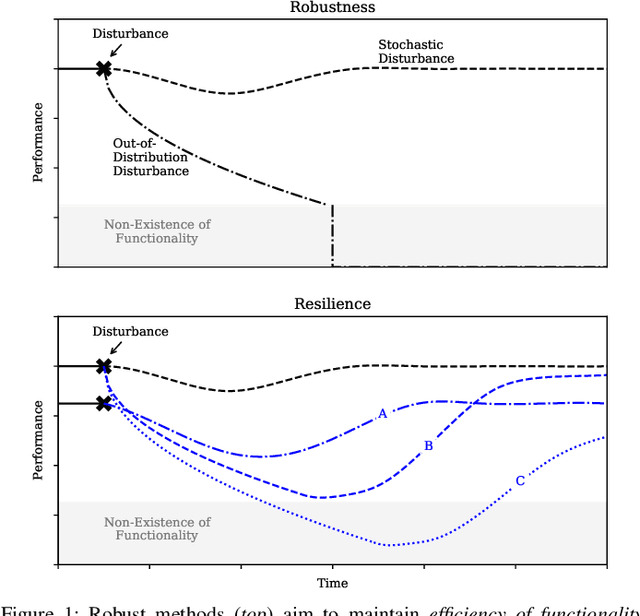Beyond Robustness: A Taxonomy of Approaches towards Resilient Multi-Robot Systems
Paper and Code
Sep 25, 2021



Robustness is key to engineering, automation, and science as a whole. However, the property of robustness is often underpinned by costly requirements such as over-provisioning, known uncertainty and predictive models, and known adversaries. These conditions are idealistic, and often not satisfiable. Resilience on the other hand is the capability to endure unexpected disruptions, to recover swiftly from negative events, and bounce back to normality. In this survey article, we analyze how resilience is achieved in networks of agents and multi-robot systems that are able to overcome adversity by leveraging system-wide complementarity, diversity, and redundancy - often involving a reconfiguration of robotic capabilities to provide some key ability that was not present in the system a priori. As society increasingly depends on connected automated systems to provide key infrastructure services (e.g., logistics, transport, and precision agriculture), providing the means to achieving resilient multi-robot systems is paramount. By enumerating the consequences of a system that is not resilient (fragile), we argue that resilience must become a central engineering design consideration. Towards this goal, the community needs to gain clarity on how it is defined, measured, and maintained. We address these questions across foundational robotics domains, spanning perception, control, planning, and learning. One of our key contributions is a formal taxonomy of approaches, which also helps us discuss the defining factors and stressors for a resilient system. Finally, this survey article gives insight as to how resilience may be achieved. Importantly, we highlight open problems that remain to be tackled in order to reap the benefits of resilient robotic systems.
 Add to Chrome
Add to Chrome Add to Firefox
Add to Firefox Add to Edge
Add to Edge